It is very important to know in which season strawberry grows in India. The Mahabaleshwar strawberry is a kind of strawberry native to the mountainous terrain of Mahabaleshwar. It is responsible for around 85 percent of India’s strawberry production. Strawberry, raspberry, mulberry, and gooseberry are other berries grown in significant quantities in and around Mahabaleshwar. Let’s check out how this farmer earning 18 lakhs from his strawberry farm below.
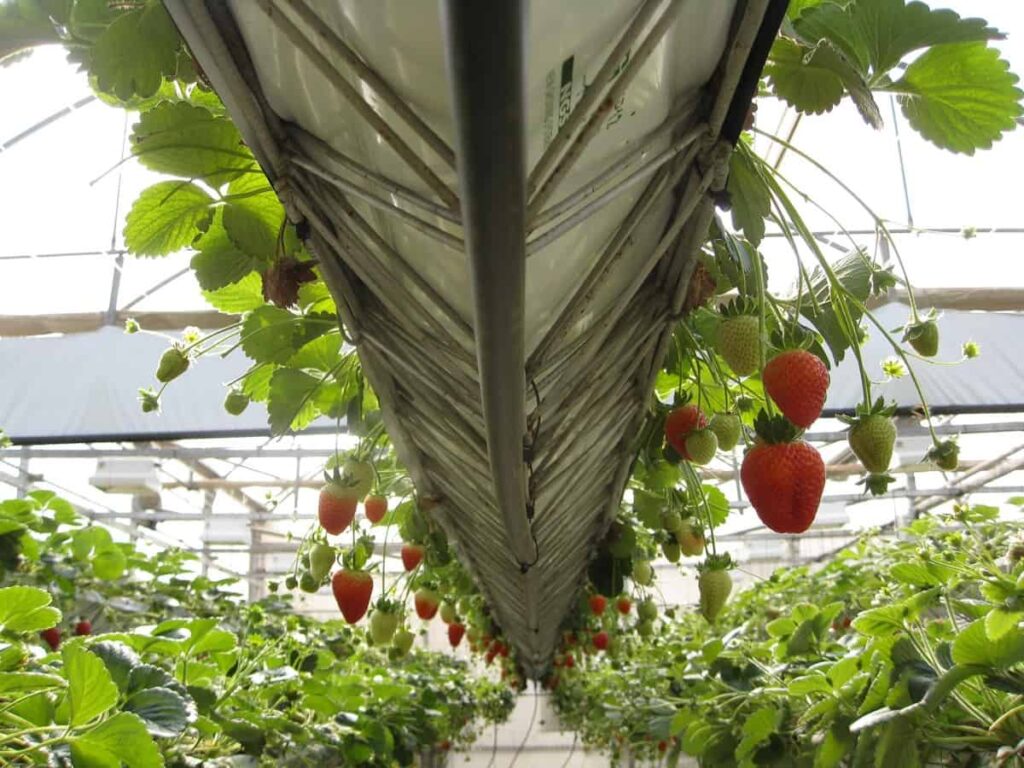
Is strawberry farming profitable in India?
Parts of India grow strawberries because they are a very profitable cash crop. Certain regions of India have ideal climates and soil for their cultivation. There are just a few areas in India where farmers can successfully grow strawberries due to the country’s wildly varying climate. Strawberries are grown in the Indian states of Uttar Pradesh, Himachal Pradesh, Delhi, Haryana, Maharashtra, West Bengal, Punjab, and Rajasthan.
Please consider that, except for Himachal Pradesh, only certain regions within each state are suggested for strawberry growing. Farmers in Mahabaleshwar, Maharashtra, are some of the most successful berry growers due to the high demand for fresh strawberries throughout the year. Strawberries are also widely grown in the Indian states of Uttarakhand (particularly in the cities of Nainital and Dehradun) and West Bengal (specifically in the city of Kalimpong).
Tamil Nadu and Kerala are two locations in India where researchers have studied strawberry production in controlled environments. Outside of the Nilgiri highlands, commercial strawberry production is not well-established in the rest of Kerala and Tamil Nadu. Growing strawberries calls for subtropical temperatures. Daytime highs should be at most 22 degrees Celsius, and nighttime lows should not dip below 13 degrees Celsius for optimal growth. The plant goes into dormancy over the winter, delaying its blooming and subsequent development.
In case you missed it: How this Farmer Earning 35 Lakhs from His Capsicum Farm: A Success Story of a Bell Pepper Polyhouse Farmer in India
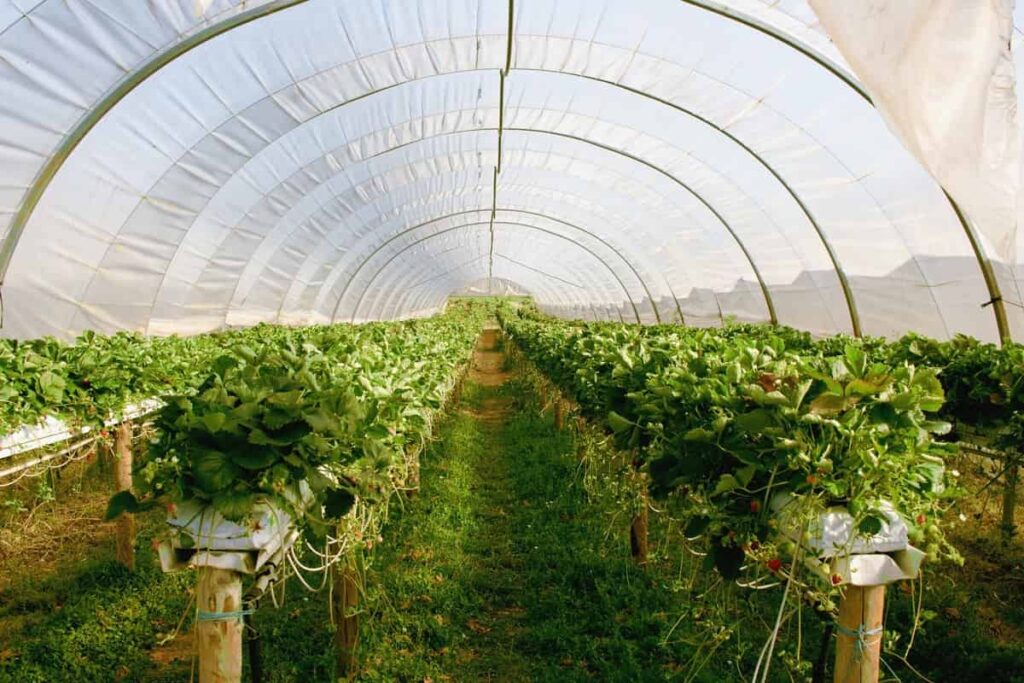
Where do strawberries grow best?
Strawberries thrive best when kept at temperatures between 13 and 22 degrees Celsius. Plants need at least eight hours of direct sunlight daily for optimal fruiting and blooming. The plant’s development is sensitive to weather and ambient temperature. Although strawberries aren’t picky about their soil, loamy or sandy soil works best. Since strawberries are perennials, their blossoms should be clipped off to prevent fruiting in the first year.
When the plant begins to produce fruit, it will redirect its energy toward producing it rather than maintaining its current state. To increase the output in the next year, it is recommended to pinch the blossoms off the plant to encourage root and plant development. When nighttime temperatures go below 6 degrees Celsius, strawberry plants become dormant for the winter. At this point, it is crucial to protect your plants from pests like slugs by mulching regularly.
After the temperature stabilizes, the plants will resume regular growth. Today’s market offers a diverse selection of options. Popular types in India include the Torrey, Selva, Belrubi, Chandler, Tioga, Fern, and Pajaro types. The Chandler cultivar is the most widely grown and productive, followed by the Tioga variety. The strawberry plant’s thin roots need to be constantly hydrated.
Care must be taken to prevent the root from drying out since it is not drought resistant. Root rot and other diseases may be brought on by overwatering, so that’s a problem too. The soil should be moist but not soggy to reduce the risk of plant illnesses and promote healthy development. An outstanding yield of 8 tonnes per acre is being achieved on average.
In case you missed it: How this Farmer Earning 40 Lakhs from His Cucumber Farm: a Success Story of a Polyhouse Farmer in India
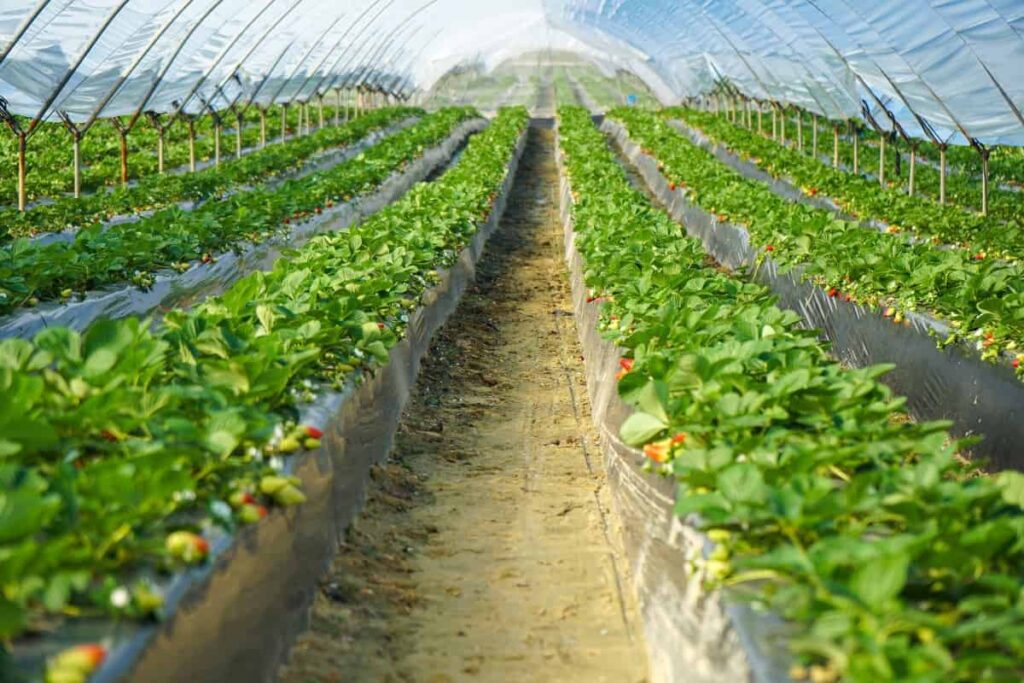
How fast does strawberry grow?
Strawberries, on average, take around three months to bear fruit. In those three months, everything from planting through harvest will have occurred. Depending on the variety, Strawberries can be grown successfully in late autumn or early winter. The first step in cultivating strawberries is fruit and bloom production. As soon as they reach a certain size, they bloom.
Flowers form on fruit-bearing plants once they have grown enough leaves and nutrients. Exposure to sufficient sunlight is required for flower emergence; otherwise, flowering and fruiting cycles can be too delayed. If soil, water, and temperature conditions are optimal, the last stage of strawberry growth is when the plant expands quickly.
How many kg does a strawberry plant produce?
The strawberry plant will determine the number of strawberries you pick, and it will change based on how well you care for it and the climate. The average production per plant is 150-400 grams. When harvested from the same strawberry plant over an average period of two years, the size of the strawberry will drop, and the yield in grams will also decrease.
How this farmer earning 18 lakhs from his strawberry farm
The success story of Mr. Suresh
Mr. Suresh is a BSc in Agriculture graduate who used to work under the government in his respective field in Hyderabad. Even though he was working and earning a decent income, he always had a passion for business. Mr. Suresh’s family owned a two-acre land in which other farmers cultivated vegetables by the ryot agreement. He took his time and decided to step into the agriculture field, quitting his job, even though his family members were against it.
In case you missed it: How This Farmer Earned 5 Lakhs from Fish and Prawn Mixed Farming: A Success Story of an Aqua Farmer in India
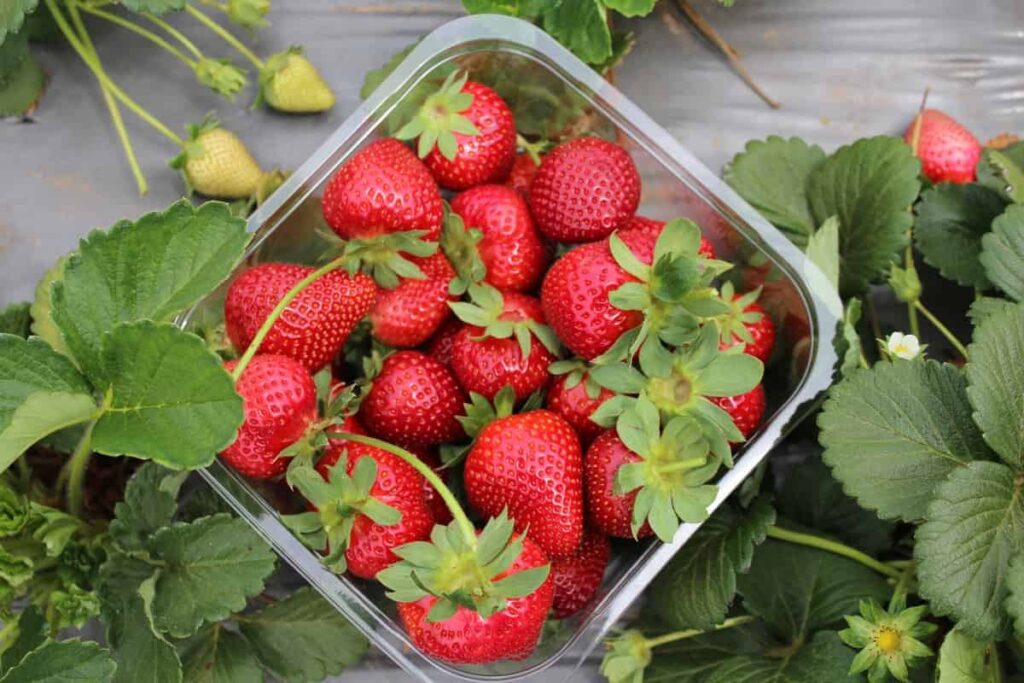
After the ryot agreement finally ended, he started to his village. He already took care of what to cultivate, the famous strawberry, which is ideal for cultivation in his village. Within a year, it became a huge success, and he was earning more than he had imagined. He was earning a lot from the farm, more than the government job he used to work for. This is the 4th year in his business. We will now learn how it became such as success. Let us look into the details of Mr. Suresh’s strawberry farm and will get to know his experience in this new field.
Plant selection, according to Mr. Suresh
Strawberry fruits are already a very popular fruit in the market. This fruit has a rising demand because of its nutrients and the scarcity of quality fruit. Strawberries can’t be grown everywhere; the temperatures cannot be very high for strawberries to grow. If the temperature exceeds 30 degrees Celcius, the plant will die. Lambisingi is known as the Kashmir of Andhra Pradesh as its temperatures are very low, making this place ideal for strawberry cultivation. Mr. Suresh already had this knowledge which led him to choose strawberry as his cultivation crop, keeping in mind its demand.
Details of strawberry cultivation in Mr. Suresh’s words
Mr. Suresh buys these plants from Mahabaleshwar, whose supplier grows seedlings from mother plants imported from Kentucky and other places. The supplies sell the seedlings to farmers once it has grown for 45 days. It cost him nearly 12 rupees per plant, including transport. Mr. Suresh plants 20,000 per acre on his two-acre farm, making 40,000 plants on his farm. One feet gap should be maintained between plants in a row, and 3 feet gap should be maintained between rows, says Mr. Suresh.
In case you missed it: Earning 2 to 3 Lakhs from Mixed Farming: A Success Story of a Farmer in India
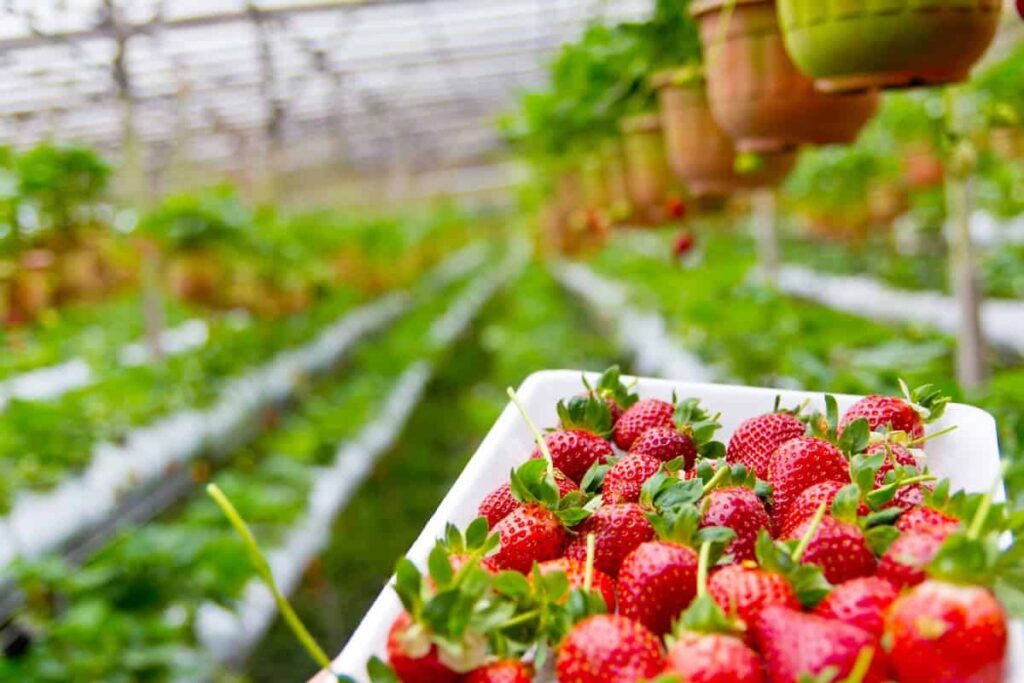
Temperature plays a major role in strawberry cultivation. Strawberries can withstand a temperature range from -2 degrees Celcius to 30 degrees Celcius. Strawberry plants cannot sustain if the temperature exceeds 30 degrees Celcius. Although normal soil (red soil) used to grow vegetables is used in strawberry cultivation, ensuring that it has the required nutrients is necessary. Climatic conditions are very important in strawberry cultivation because of temperature and humidity.
In Telugu states, strawberry plants can only be grown from late fall to early spring. Watering is done by drip irrigation method. He also gives fertilizers in liquid form to his plants through these drip lines. This method is called the fertigation method. Also, mulching covers are a must in strawberry cultivation. These covers are spread on rows, with holes between them where seedlings are planted. Mulching covers prevent the growth of weeds and any other plants.
Strawberries are sensitive plants, so these mulching covers reduce competition for optimal growth. In addition, strawberries are a self-pollinated plant. Still, Mr. Suresh has planted some marigold flowers on the edges of his farm so that pollinators could aid in pollinating strawberry plants. This process can help fasten pollination, which could take plants less time to mature. Also, he used blue and yellow traps across his farm to prevent insects.
He also says that these traps cannot prevent the whole insect infestation but can at least reduce it to 30 percent. Neem oil is majorly used on his farm to prevent insect infestations. To control insects on a large scale, he uses pesticides and insecticides that, too, only when necessary. Too much use of pesticides can make soil unfertile and affect the fruit’s taste and scent. This can decrease the demand for the crop, says Mr. Suresh. He advises people to reduce chemical pesticides and increase the use of natural fertilizers.
Although it may take a bit of time and effort to make natural fertilizers, it can show a great result in the yield and taste of the fruit. Mr. Suresh says he only uses natural fertilizers such as seaweed to increase and fasten the yield. Also, while making beds at the start of the crop, he uses cow manure and compost to amend the soil. This has to be done after the tilling. Once the soil is well mixed with the natural fertilizers, you will get an excellent yield, says Mr. Suresh.
Seaweed will be used while growing; this aids in fast growth and ripening of strawberry fruit, he added. This whole strawberry planting season will start in late august. Yow will get the first harvest in October. The planting season will end in late February. From each plant, he gets nearly 300 to 500 grams of fruit, says Mr. Suresh. Also, unlike the other farms, strawberries’ price increases when they are directly bought at the farm.
In case you missed it: Earning Up to 4 Lakhs from Pearl Farming: A Success Story of a Pearl Farmer in India
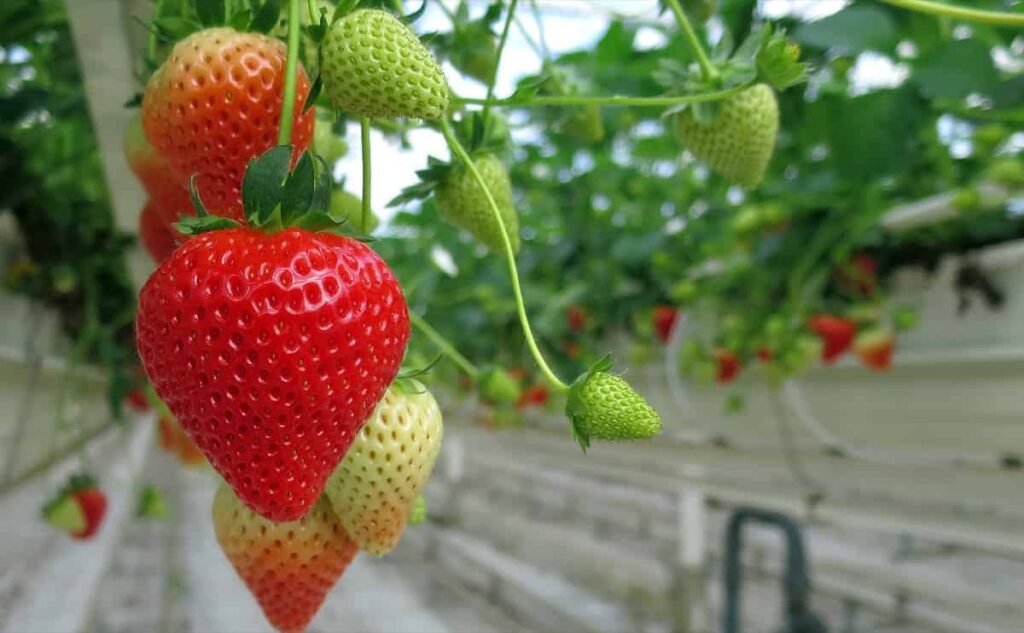
This is because strawberries will lose their freshness while transported from the farm to the market or other selling stores. When bought near the farm, you will get tasty and fresh strawberries, thus the price. Also, ripened strawberries won’t last more than a day. So as soon as harvest happens daily, the fruits are sold at the farm or transported to the markets.
Profit analyses of Mr. Suresh’s strawberry farm
When taking every minute investment into account, Mr. Suresh said that he had invested nearly 7 lakh rupees on his strawberry farm. He says he tied up with a supermarket company and sold his strawberries for 350 rupees per kg. His income per acre is nearly 12,00,000 rupees. And for the total farm, he gets nearly 24,00,000 rupees as income.
If we take out the investment, we can say that he makes a profit of nearly 18,00,000 rupees in a season. You have to note that strawberry cultivation doesn’t last the whole year. This plant’s growing season is from late fall to early spring in Andhra Pradesh. From this, we can say that he earns nearly 18,00,000 rupees per year from cultivating strawberries on his two-acre farm.
Mr. Suresh is now happy about his decision, earning huge profits from cultivating strawberries. He wants more young people to get into agriculture and says it involves huge profits if you plan it creatively. He also says one can extend strawberries growing season by cultivating them in a polyhouse. He is satisfied with what he is doing and is now a proud farmer.
- Types of Pesticides Used in Agriculture: A Beginner’s Guide
- Economical Aquaculture: A Guide to Low-Budget Fish Farming
- 15 Common Planting Errors That Can Doom Your Fruit Trees
- How to Make Houseplants Bushy: Effective Tips and Ideas
- Innovative Strategies for Boosting Coconut Pollination and Yield
- Pollination Strategies for Maximum Pumpkin Yield
- The Complete Guide to Chicken Fattening: Strategies for Maximum Growth
- Natural Solutions for Tulip Problems: 100% Effective Remedies for Leaf and Bulb-Related Issues
- Revolutionizing Citrus Preservation: Towards a Healthier, Greener Future
- Natural Solutions for Peony Leaf and Flower Problems: 100% Effective Remedies
- Maximizing Profits with Avocado Contract Farming in India: A Comprehensive Guide
- Natural Solutions for Hydrangea Problems: 100% Effective Remedies for Leaf and Flowers
- The Ultimate Guide to Choosing the Perfect Foliage Friend: Bringing Life Indoors
- From Sunlight to Sustainability: 15 Ways to Use Solar Technology in Agriculture
- The Ultimate Guide to Dong Tao Chicken: Exploring from History to Raising
- The Eco-Friendly Makeover: How to Convert Your Unused Swimming Pool into a Fish Pond
- Mastering the Art of Delaware Chicken Farming: Essentials for Healthy Backyard Flocks
- 20 Best Homemade Fertilizers for Money Plant: DIY Recipes and Application Methods
- How to Craft a Comprehensive Free-Range Chicken Farming Business Plan
- Brighten Your Flock: Raising Easter Egger Chickens for Beauty and Bounty
- How to Optimize Your Poultry Egg Farm Business Plan with These Strategies
- Subsidy for Spirulina Cultivation: How Indian Government Schemes Encouraging Spirulina Farmers
- Ultimate Guide to Raising Dominique Chickens: Breeding, Feeding, Egg-Production, and Care
- Mastering the Art of Raising Jersey Giant Chickens: Care, Feeding, and More
- Ultimate Guide to Raising Legbar Chickens: Breeding, Farming Practices, Diet, Egg-Production
- How to Raise Welsummer Chickens: A Comprehensive Guide for Beginners
- How to Protect Indoor Plants in Winter: A Comprehensive Guide
- Ultimate Guide to Grow Bag Gardening: Tips, Tricks, and Planting Ideas for Urban Gardeners
- Guide to Lotus Cultivation: How to Propagate, Plant, Grow, Care, Cost, and Profit
- Agriculture Drone Subsidy Scheme: Government Kisan Subsidy, License, and How to Apply Online
- Ultimate Guide to Raising Araucana Chickens: Breed Profile, Farming Economics, Diet, and Care
- Bringing Hydroponics to Classroom: Importance, Benefits of Learning for School Students
- Ultimate Guide to Raising Polish Chickens: Breed Profile, Farming Economics, Diet, and Care
- Ultimate Guide to Raising Australorp Chickens: Profile, Farming Economics, Egg Production, Diet, and Care
- Silkie Chicken Farming: Raising Practices, Varieties, Egg Production, Diet, and Care
- Sussex Chicken Farming: Raising Practices, Varieties, Egg Production, Diet and Care